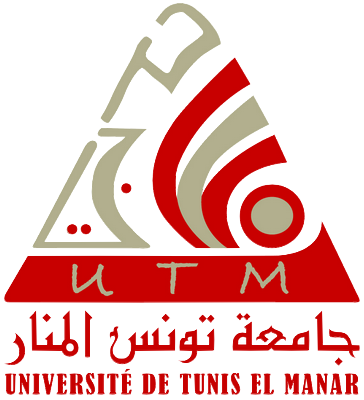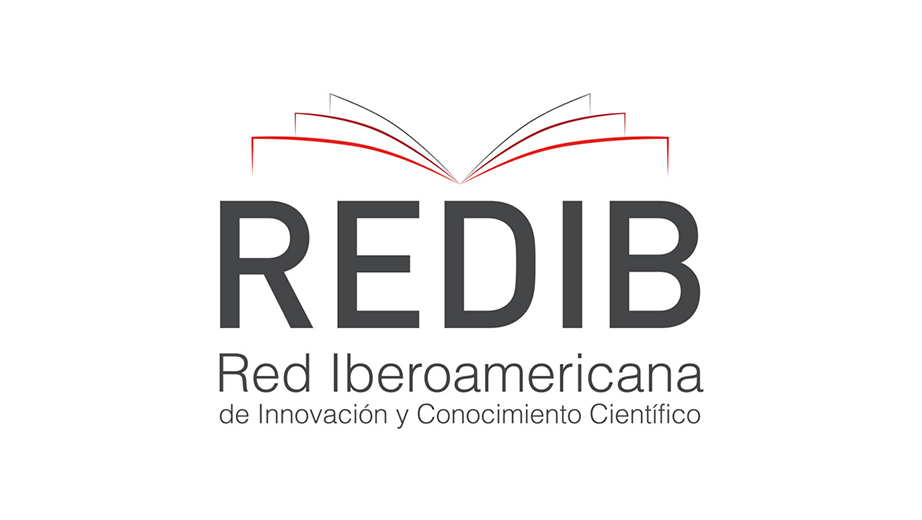Linguistic Time and Aspect. Conceptual and Contrastive Approaches: Arabic, French and Spanish
DOI:
https://doi.org/10.71564/dh.vi5.57Keywords:
Past Tense and Aspect, Arabic, Spanish L3 Acquisition, Contrastive AnalysisAbstract
The main objective of this article is to expose the temporal and aspectual specificities of Arabic verbal system in contrast to Romance languages, namely, Spanish and French, as a fundamental step, prior to an empirical study on the acquisition of preterit and imperfect past tenses in Spanish as L3, by Tunisian Arabic-speaking learners with L2 French. Such contrast suggests that, despite the disparity between the romance languages under study and Arabic as far as past tense and aspect expression is concerned, the semantic combinations between lexical and inflectional aspect, are quite similar in the three languages. It is therefore possible to hypothesize that the acquisition of the preterit and imperfect Spanish past tenses as well as their aspectual semantics should not constitute any problems for the Tunisian Arabic-speaking learners with L2 French.
Downloads
References
AL-‘AQQAD, ‘abbas M. (1962). “Az-zamān fi-l-luḡati al-‘arabiyati”. Revue de l’Académie du Caire, 14: 37-44.
ALARCOS LLORACH, E. (1994). Gramática de la lengua española. Madrid: Espasa-Calpe.
AL-MAHZŪMĪ, M. (1986). Fī-n-naḥwi al-‘arabiyya: naqdun wa tawŷīhun (Sobre la gramática árabe: crítica y orientación), 2.ª ed. Beirut: Editorial Dāru ’alrrā’idi’al-‘arab.
AS-SAMARRĀ’Ī, ’I. (1983). Al-fi‘lu: zamānuhu wa ’abniyatuhu (El verbo: tiempo y estructura), 3ª Ed. Bairot: Editorial de Mu’assasaht Al-rrisālaht.
AMENÓS PONS, J. (2010). Los tiempos de pasado del español y el francés: semántica pragmática y aprendizaje de E/LE. Perspectivas desde la teoría de la relevancia. Tesis doctoral. UNED.
ASOCIACIÓN DE ACADEMIAS DE LA LENGUA ESPAÑOLA (2009). Nueva gramática de la lengua española. Morfología y sintaxis, vol. I. Madrid: Espasa Libros, S.L.U.
BAHLOUL, M. (2008). Structure and Function of the Arabic Verb. Nueva York: Routledge Arabic Linguistic Series.
BELLO, A. (1847). Gramática de la lengua castellana destinada a uso de los americanos. Santiago de Chile, Madrid, Colección EDAF.
BENVENISTE, E. (1974). Problèmes de linguistique générale 2. París: Gallimard.
BLACHÈRE, R. (1975). Grammaire de l’arabe classique. París: Maisonneuve et Larose.
BOSQUE, I. (ed.) (1990). Tiempo y aspecto en español. Madrid: Cátedra.
BRUSTAD, K. (2000). The syntax of Spoken Arabic: A Comparative Study of Moroccan, Egyptian and Kuwaiti Dialects. Washington D.C.: Georgetown University Press.
CHEVALIER, J.-C, (1992). “Le verbe une fois de plus”. En Gilles LUQUET (coord.). Actualités de la recherche en linguistique hispanique. Actes du IVe colloque de linguistique hispanique. Limoges: Presses de l'Université de Limoges et du Limousin, 29-342.
COHEN, D. (1989). L'aspect verbal. París: Presses Universitaires de France.
COHEN, M. (1924). Le système verbal sémitique et l’expression du temps. París: Leroux.
COMRIE, B. (1976). Aspect: An Introduction to the Study of Verbal Aspect and Related Problems. Cambridge: Cambridge University Press.
——— (1985). Tense. Cambridge: Cambridge University Press.
CORRIENTE, F. (2006). Gramática árabe. Barcelona: Herder
COSERIU, E. (1980). “Aspect verbal ou aspects verbaux? Quelques questions de théorie et de méthode”. En J. DAVID y R. MARTIN (eds.). La notion d’aspect. París: Klincksieck, 13-25.
DAMOURETTE, J. y PICHON, E. (1911-1936). Des mots à la pensée. Essai de grammaire de la langue française, vol. V. París: D'Artrey.
DE MIGUEL, E. (1999). “El aspecto léxico”. En I. BOSQUE y V. DEMONTE (eds.). Gramática descriptiva de la lengua española, vol. 2. Madrid: Espasa Calpe, 2977-3060.
DE SACY, S. (1831). La grammaire arabe. París: Imprimerie Royale.
DE SWART, H. (1998). “Aspect Shift and Coercion”. Natural Language and Linguistic Theory, 16 (2): 347-385.
DECLERCK, R. (1991). Tense in English: its Structure and Use in Discourse. Londres, Nueva York: Routledge.
DOQUIN DE SAINT PREUX, A. (2008). L'enseignement du français aux hispanophones : problèmes repérés, études linguistiques, propositions didactiques. Lille: Atelier National de Reproduction des Thèses.
——— (2017). “Una representación del sistema verbo-temporal español basada en la teoría de la psicomecánica del lenguaje de Gustave Guillaume”. En María Cecilia AINCIBURU y Claudia FERNANDEZ SILVA (eds.). La adquisición de la lengua española: evaluación, enseñanza, evaluación. Estudios en homenaje a Marta Baralo Ottonello. Buenos Aires: Autores Argentinos.
DUCHACEK, O. (1966). “Sur le problème de l’aspect et du caractère de l’action verbale en français”. Le français moderne. Revue de linguistique française, 3: 161-184.
EISELE, C. (1999). Arabic Verbs in Time: Tense and Aspect in Cairene Arabic. Wiesbaden: Harrassowitz.
FASSI FEHRI, A. (1993). Issues in the structure of Arabic clauses and words. Dordrecht: Kluwer.
FESSI, I. (2014). Adquisición del contraste aspectual entre los pretéritos imperfecto e indefinido en español L3 por arabófonos tunecinos. Tesis doctoral inédita. Universidad Nebrija.
——— (2016). “Cross-linguistic influence in tense- aspect Spanish L3 acquisition: A study of Arabic Tunisian learners of L3 Spanish”. Revista Nebrija de Lingüística Aplicada, 20 [http://www.nebrija.com/revista-linguistica/files/articulosPDF/articulo_56fb9ec59aecb.pdf].
——— (2017). “Adquisición y transferencia de tiempo y aspecto en español como L3”. En M. C. AINCIBURU (ed.). La adquisición del sistema verbal del español. Fráncfort: Peter Lang, 115-147.
FLEISCH, H. (1957). L'arabe classique : esquisse d'une structure linguistique. Beirut: Imprimerie Catholique.
GARCÍA FERNÁNDEZ, L. (1998). El aspecto gramatical en la conjugación. Madrid: Arco-Libros.
GUILLAUME, G. (1964). Langage et science du langage. París: Nizet.
——— (1984). Temps et verbe. Théorie des aspects, des modes et des temps. París: Honoré Champion.
HAMZAOUI, R.(1975). L’Académie de la langue arabe du Caire. Histoire et œuvre. Túnez: Publications de l’Université de Tunis.
KURYLOWICZ, J. (1973). “Verbal Aspect in Semitic”. Orientalia, 42: 144-120.
MCCARUS, E.N. (1976). A Semantic Analysis of Arabic Verbs. Ann Arbor: Department of Near Eastern Studies, University of Michigan.
MESSAOUDI, L. (1985). Temps et aspect: approche de la phrase simple. París: Paul Geuthner.
MOUNIN, G. (1968). “Problèmes terminologiques de l’aspect”. Linguistica Antverpiensia, II: 317-328.
POTTIER, B. (1962). Systématique des éléments de relation. Étude de morphosyntaxe structurale romane. París: Klincksieck.
QUIRK, R. et al., (1986). A Comprehensive Grammar of the English Language. Londres: Longman.
RECKENDORF, H. (1895). Die syntaktischen Verhältnisse des arabischen. Leiden: E. J. Brill.
RIGHT, W. (1981). A grammar of the Arabic language. Cambridge University Press.
ROJO, G. (1990). “Relaciones entre temporalidad y aspecto en el verbo español”. En I. BOSQUE (ed.). Tiempo y aspecto en español. Madrid: Cátedra, 17-40.
ROJO, G. y VEIGA, A. (1999). “El tiempo verbal. Los tiempos simples”. En I. BOSQUE y V. DEMONTE (eds.). Gramática descriptiva de la lengua española (vol. 2): Las construcciones sintácticas fundamentales. Las relaciones temporales, aspectuales y modales. Madrid: Espasa-Calpe, 2867-2935.
SIBAWAIHĪ (1967). Al-Kitāb. Beirut: Mu’assassāt al’a ‘lami li-l-maṭbu‘āt.
SLABAKOVA, R. y MONTRUL, S. (2002). “On Viewpoint Aspect Interpretation and its L2 Acquisition. A UG Perspective”. En R. SALABERRY y Y. SHIRAI (eds.). The L2 Acquisition of Tense-Aspect Morphology. Ámsterdam-Philadelphia: John Benjamins, 363-398.
——— (2003). “Genericity and Aspect in L2 Acquisition”. Language Acquisition, 11: 165-196.
SMITH, C. (1991). The Parameter of Aspect. Dordrecht: Kluwer Academic.
TAMMAM, H. (1974). Al-luḡatu ’al-‘arabiyatu: ma‘nāha wa mabnāha. El Cairo: matābi‘u al-hayati al-maṣriyyati al-‘ammati li-l-kitābi.
VENDLER, Z. (1967). Linguistics in Philosophy. New York: Cornell University Press.
VERSTEEGH, K. (1984). Pidginization and Criolization: the Case of Arabic. Ámsterdam: Benjamins.
VERSTEEGH, K. (2001). The Arabic language. Edimburgo: Edinburgh University Press.
VET, C. y VETTERS, C., eds. (1994). Tense and Aspects in Discourse. Berlín-Nueva York: Mouton de Gruyter.
ZAMORANO MANSILLA, J.R. (2006). Generación de tiempo y aspecto en inglés y en español: un estudio funcional contrastivo. Tesis doctoral. Universidad Complutense de Madrid.
Downloads
Published
How to Cite
Issue
Section
License
Copyright (c) 2018 Inès Fessi

This work is licensed under a Creative Commons Attribution-NonCommercial 4.0 International License.
Los autores que publican en esta revista están de acuerdo con los siguientes términos:
Los autores conservan los derechos de autor y garantizan a la revista el derecho de ser la primera publicación del trabajo al igual que licenciado bajo una Creative Commons Attribution License que permite a otros compartir el trabajo con un reconocimiento de la autoría del trabajo y la publicación inicial en esta revista, sin hacer uso del material con propósitos comerciales.
Los autores pueden establecer por separado acuerdos adicionales para la distribución no exclusiva de la versión de la obra publicada en la revista (por ejemplo, situarlo en un repositorio institucional o publicarlo en un libro), con un reconocimiento de su publicación inicial en esta revista.
Se permite y se anima a los autores a difundir sus trabajos electrónicamente (por ejemplo, en repositorios institucionales o en su propio sitio web) antes y durante el proceso de envío, ya que puede dar lugar a intercambios productivos, así como a una citación más temprana y mayor de los trabajos publicados.































